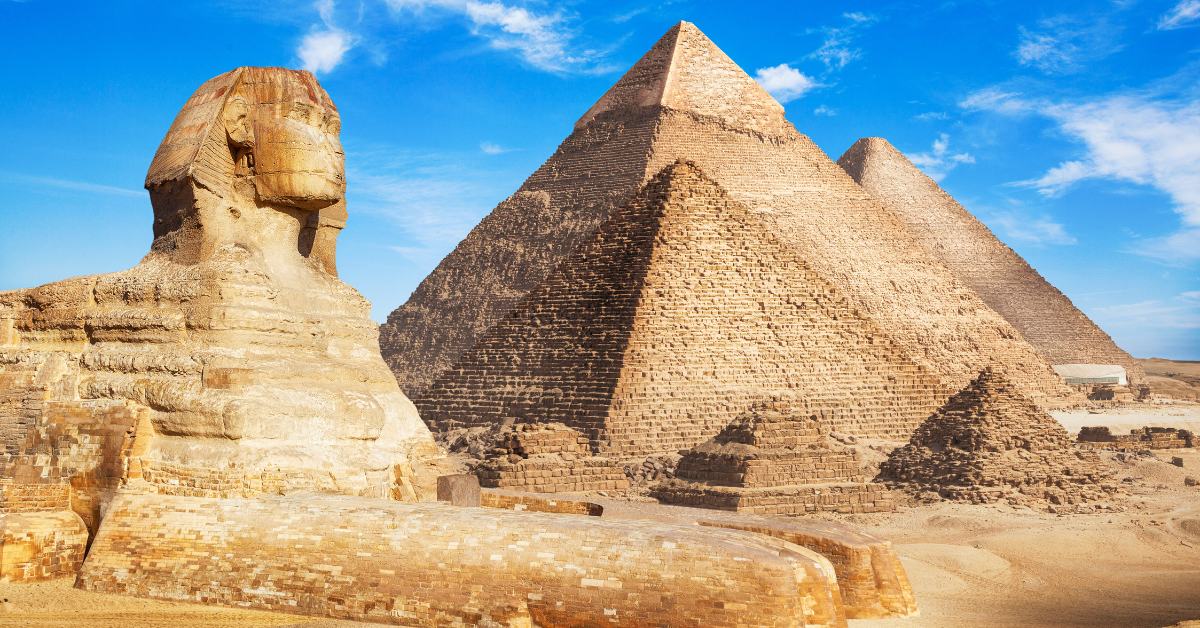The Egyptian pyramids impress everyone, but Japanese impressions are unique. Influenced by history, nature, and views on life and death, Japanese people perceive the pyramids in ways that differ from many others.
- First Impressions of the Pyramids for Japanese Visitors
- Connections Between Japanese Culture and the Pyramids
- Spiritual Aspects Felt by Japanese Visitors
- Differences in Perception Between Japanese and Western Visitors
- Impressions from Japanese Tourists’ Experiences
- Japanese Sensitivity to Details
- Conclusion
First Impressions of the Pyramids for Japanese Visitors
Awe at Size and a Sense of Stillness
When Japanese people see the pyramids, the first thing that strikes them is their overwhelming size. Even though they may have seen them countless times on television or in photos, standing in front of them far exceeds imagination. Yet at the same time, many Japanese also sense a profound stillness within this massive stone structure. This echoes the Japanese aesthetic of wabi-sabi, where grandeur and tranquility coexist in harmony.
Feeling the Weight of History
The pyramids were built about 4,500 years ago. For Japanese people, temples or shrines that have lasted for several hundred years are already considered “ancient.” Confronted with a monument that goes far beyond that time scale, they regard it with respect as an existence that transcends human time itself.
Connections Between Japanese Culture and the Pyramids
Comparison with Mount Fuji
A common reaction among Japanese visitors is, “It reminds me of Mount Fuji.” This is not only because of the shared triangular shape, but also because both are objects of prayer and reverence. Mount Fuji is a natural volcano, while the pyramids are man-made structures. Yet both are seen as “forms of faith created by nature and humanity.”
| Point of Comparison | Mount Fuji | Pyramids |
|---|---|---|
| Shape | Triangular | Triangular |
| Origin | Natural volcano | Stone structure built by humans |
| Role | Object of worship, symbol of climbing | Royal tomb, eternal symbol of power |
| Japanese perception | Familiar yet awe-inspiring | Mysterious and awe-inspiring foreign monument |
Stone Architecture vs. Wooden Culture
Traditional Japanese architecture relies heavily on wood, designed to blend harmoniously with nature. The pyramids, constructed from massive stones piled with precision, are received with astonishment. Japanese travelers often wonder, “How did they transport and stack such enormous stones?” and feel deep admiration for the wisdom and labor of ancient craftsmen.
Spiritual Aspects Felt by Japanese Visitors
Resonance with Views on Life and Death
The pyramids were built as royal tombs. In Japanese culture, death is not seen as an “end,” but as a connection with ancestors. Since Japanese people value family graves and visiting them, they naturally view the pyramids not only as symbols of power but also as sacred places honoring the dead.
Linking the Pyramids with the Flow of Time and Seasons
Japanese culture places great importance on the changing of the four seasons. When viewing the pyramids, their unchanging presence in the desert is perceived as a symbol of eternity. For Japanese visitors, this becomes a contrast with the seasonal cycle of cherry blossoms, autumn leaves, or snow. It represents the interplay between “what endures forever” and “what changes with time.”
Differences in Perception Between Japanese and Western Visitors
| Aspect | Japanese Perspective | Western Perspective |
|---|---|---|
| Impression of size | Awe combined with a sense of stillness | Symbol of strength and authority |
| View of history | Emphasis on eternity and ancestral connection | Focus on rulers’ power and civilization’s progress |
| Shape association | Reminds them of Mount Fuji or natural symbols | Appreciated as geometric beauty or architectural design |
| Interest in technique | Respect for craftsmen’s skill and dedication | Emphasis on scientific methods and labor mobilization |
This comparison shows that Japanese people interpret the pyramids through the lens of nature and spirituality, while Western visitors emphasize rationality, power, and progress.
Impressions from Japanese Tourists’ Experiences
Accounts from Japanese tourists include comments such as: “When the massive structure suddenly appeared in the desert, I was left speechless,” and “In each stone I felt the traces of human hands.” Others remarked, “Although the way of honoring the dead differs, the heart that respects them is universal.”
Some also said, “Standing in the desert winds, the pyramids seemed like part of nature itself.” This reflects the Japanese tendency to see them not just as tourist attractions, but as places where humanity and nature coexist.
Japanese Sensitivity to Details
Beyond the sheer size, Japanese people also notice the precise stacking of stones and the absence of gaps. Those familiar with Japanese castles or stone walls see a similar beauty in technique. The symmetry and efficient design resonate with Japanese aesthetic values.
| Focus | Japanese View | Western View |
|---|---|---|
| Stonework | Appreciation of craftsmen’s skill and precision | Evidence of large-scale labor organization |
| Shape | Beauty in symmetry and lack of waste | Admiration for geometric design |
| Durability | Respect for endurance against time and weather | Seen as an experimental achievement in durability |
Conclusion
The pyramids inspire awe in people worldwide, but Japanese impressions contain unique elements such as stillness, eternity, and a connection with nature. Comparisons with Mount Fuji, contrasts with wooden architecture, and resonance with views on death all reflect cultural values deeply rooted in Japan.
For foreign readers, understanding these impressions offers a fresh perspective: the pyramids are not only historical monuments but also symbols of humanity’s shared reverence and prayers across cultures.






